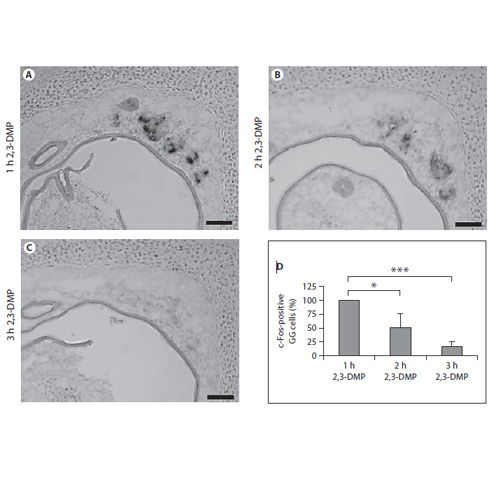Chemo- and Thermosensory Responsiveness of Grueneberg Ganglion Neurons Relies on Cyclic Guanosine Monophosphate Signaling Elements
31-Aug-2011
Neurons of the Grueneberg ganglion (GG) in the anterior na- sal region of mouse pups respond to cool temperatures and to a small set of odorants. While the thermosensory reactiv- ity appears to be mediated by elements of a cyclic guanosine monophosphate (cGMP) cascade, the molecular mecha- nisms underlying the odor-induced responses are unclear. Since odor-responsive GG cells are endowed with elements of a cGMP pathway, specifically the transmembrane guany- lyl cyclase subtype GC-G and the cyclic nucleotide-gated ion channel CNGA3, the possibility was explored whether these cGMP signaling elements may also be involved in chemo- sensory GG responses. Experiments with transgenic mice deficient for GC-G or CNGA3 revealed that GG responsive- ness to given odorants was significantly diminished in these knockout animals. These findings suggest that a cGMP cas- cade may be important for both olfactory and thermosen- sory signaling in the GG. However, in contrast to the thermo- sensory reactivity, which did not decline over time, the che- mosensory response underwent adaptation upon extended stimulation, suggesting that the two transduction processes only partially overlap.











